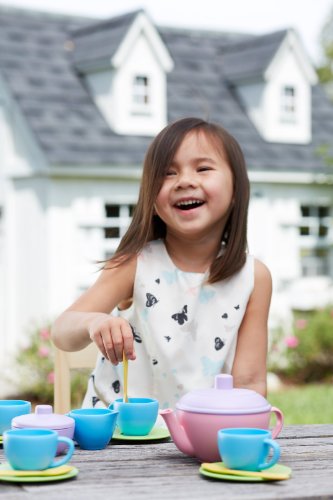Why we recommend buying eco-toys for children of all ages
It is natural when transitioning to a healthier, more sustainable, lifestyle to consider what we will put in and on our bodies. We may, though, forget to consider the objects we surround ourselves with daily, and the impact they can have on our health and environment. The health of our children is often a key reason for transitioning to healthy living, but have you considered the impact the toys you choose for them can have on their well-being? There are, in fact, many compelling reasons to transition from buying conventional plastic playthings to investing in safe and sustainable toys for our children.
 In the year 2007, there were a number of massive recalls of toys due to high levels of lead. This news was an unsettling eye-opener to many parents that the toys they had lovingly chosen for their children could be potentially detrimental to their health. The recall helped turn consumer attention to the rather neglected area of toy safety.
In the year 2007, there were a number of massive recalls of toys due to high levels of lead. This news was an unsettling eye-opener to many parents that the toys they had lovingly chosen for their children could be potentially detrimental to their health. The recall helped turn consumer attention to the rather neglected area of toy safety.
Much attention as of late has been given to the safety of the plastic toys and food containers children use on a daily basis. Plastics have found their way into all our lives, and it is nearly impossible to avoid them. Unfortunately, there are many chemicals of concern in plastic products. In his article in the Journal of the Yale School of Forestry and the Environment, Bruce Fellman explains:
The molecules of concern in the plastics story are known as endocrine-disrupting chemicals (EDCs), and the two most-studied sources of EDCs are bisphenol A (BPA), a basic building block of hard, polycarbonate plastics and epoxy resins, and phthalates (pronounced thal-ates), which are added to plastics to make them more pliable…There is also now abundant research that links BPA and phthalate exposure to such human health concerns as deformities of the male and female genitals; premature puberty in females; decreased sperm quality; and increases in breast and prostate cancers, infertility, miscarriages, obesity, type 2 diabetes, allergies and neurological problems, like attention deficit hyperactivity disorder.
There is legislation in process to ban the use of several phthalates in children’s toys, it may take a few years for this to have full effect. Of course, any plastic toys in children’s toy boxes right now have not been regulated in this area. And while BPA is no longer found in baby bottles and sippy cups, some toys still contain BPA as it is a component in many hard plastics. Even with new regulations on these more highly studied plastic components, it is likely that even non BPA or phthalate free plastic can have similar health effects. Also, there have been many new findings on the benefits of BPA free plastic.
Not only do plastic toys pose many health risks to children, they greatly increase the amount of non-biodegradable waste that enters our landfills. As discussed in this article, plastics do not biodegrade. The effects of plastic in our landfills are far-reaching. From injuring wildlife to leaching toxic chemicals into our waterways, we are certainly paying for our reliance on plastic.
The happy news is there is nearly always an alternative to a plastic product, and this is most certainly true when it comes to children’s toys. Wooden toys are a wonderfully sturdy and sustainable option. Simple wooden toys increase imaginative play. Without flashing lights and buttons to push, the child is free to decide how he or she will use the toy. Think of a set of different shaped wooden blocks, for example, and the endless play-value they can hold. Wooden toys can withstand years of use, are often easily fixed if broken, and can be passed on as heirlooms.
Our children are the future. Let’s support their health and well-being, all day long.